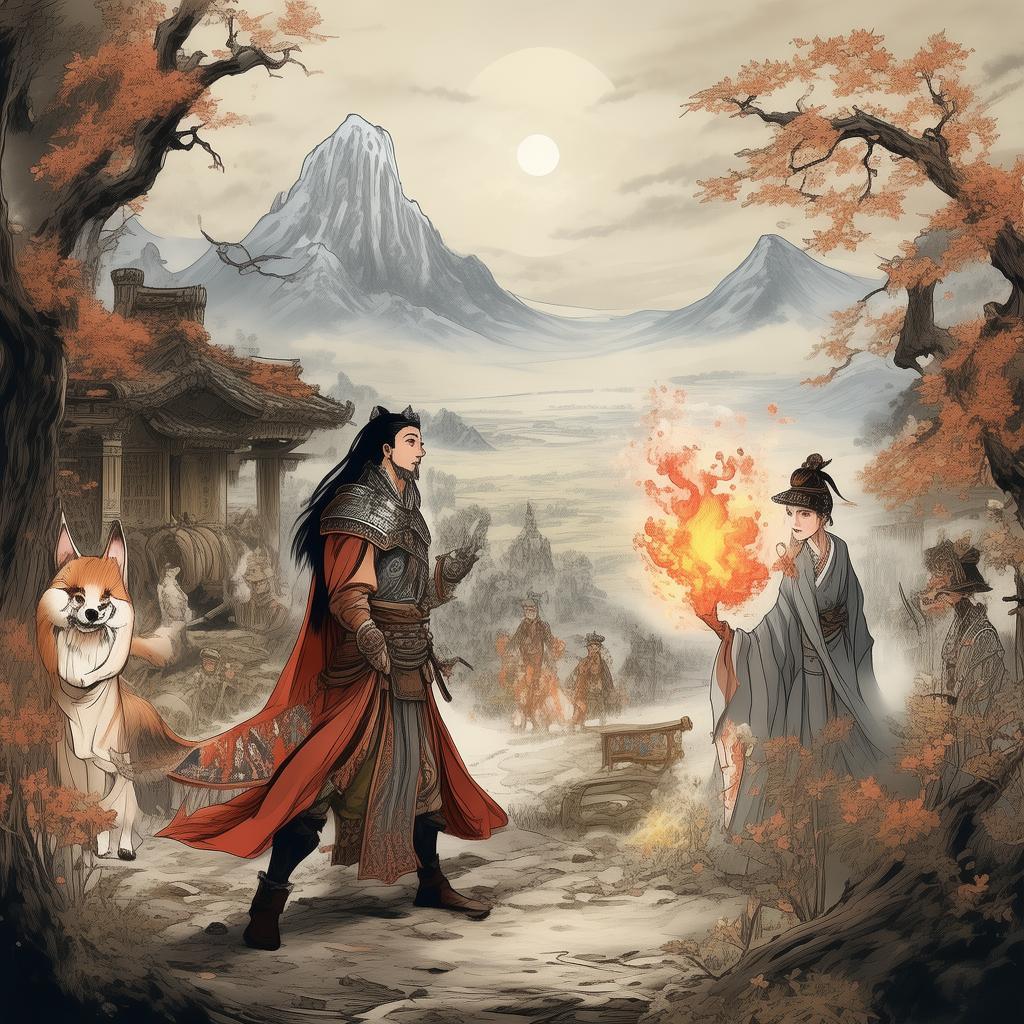The Weaver's Lament: A Tapestry of Tragedy and Redemption
In the heart of the Sichuan province, nestled among rolling hills and whispering rivers, there lay a village shrouded in mist and legend. It was here, in the quaint hamlet of Longxing, that the story of the Weaver's Legacy unfolded—a tale of tragedy, resilience, and the enduring spirit of a people.
The village was renowned for its skilled weavers, whose intricate patterns and vibrant colors adorned the garments of the locals and travelers alike. Among them was an old man named Li, known to all as the Master Weaver. His hands, calloused and skilled, had woven tales of yore into the threads of his tapestries, each piece a testament to the village's rich heritage.
Li's son, Ming, was a prodigy, inheriting his father's talent and passion for the craft. The young man's weavings were as exquisite as his father's, and it was said that his designs could bring good fortune to those who owned them. Ming's future seemed bright, filled with the promise of a life of weaving and prosperity.
One fateful day, a typhoon struck Longxing, unleashing its wrath upon the village. The storm was fierce, and the villagers huddled together, praying for safety. As the tempest raged, a powerful gust of wind carried away the roof of Li's workshop, where Ming was working on his latest creation—a tapestry depicting the village's most revered deity, the Dragon King.
In the chaos, Ming was swept away by the torrential rain and the swirling winds. His father, in a desperate bid to save his son, followed, but the storm was too strong. Li was washed away, and the village was left in mourning.
The tapestry Ming was working on was never found, and it was said that the Dragon King was so angered by the loss of his depiction that he cursed the village. The weavers' craft, once a source of pride and prosperity, began to wane. The village's prosperity dwindled, and the once vibrant market stalls were replaced by empty shops.
Years passed, and the village's sorrow deepened. Ming's absence was a constant reminder of the tragedy that had befallen the family. Li, the Master Weaver, never spoke of his son again, his grief a silent specter that haunted him.
One day, a young woman named Hua arrived in Longxing. She was a weaver from a distant land, seeking to learn the ancient craft. Hua was captivated by the village's history and the Master Weaver's legend. She approached Li, seeking his guidance, and it was then that she learned of Ming and the cursed tapestry.
Hua was determined to bring Ming back and restore the village's prosperity. She spent days and nights in Li's workshop, studying the patterns and techniques that had once been Ming's passion. She was determined to weave a tapestry that would satisfy the Dragon King and lift the curse.
As the days turned into weeks, Hua's tapestry began to take shape. It was a masterpiece, a blend of the village's traditions and her own unique style. The villagers gathered to witness the completion of the tapestry, their spirits lifted by the promise of redemption.
On the day of the tapestry's unveiling, the villagers gathered in the village square. Li, now an old man, stood before them, his eyes filled with hope. Hua stepped forward, her hands trembling as she held up the tapestry.
As the tapestry was unfurled, the villagers gasped. The Dragon King was depicted with such life and grace that it seemed he would leap from the fabric. The villagers felt a surge of pride and joy, and for the first time in years, there was a sense of hope.
Hua knelt before Li, her eyes glistening with tears. "Master Weaver, I have done my part. Now, it is up to you."

Li took a deep breath and approached the tapestry. He reached out and touched the fabric, his fingers tracing the intricate patterns. Suddenly, a soft glow emanated from the tapestry, and the villagers felt a warmth spread through their bodies.
In that moment, Ming appeared before them, whole and unharmed. He had been trapped in the tapestry, brought back to life by the power of the Dragon King's image. Ming embraced his father, and the villagers cheered, their sorrow turned to joy.
Li looked upon his son with a mixture of relief and gratitude. "Hua, you have saved us all. Your tapestry has brought Ming back to us, and with him, the spirit of the weavers."
Hua smiled, her heart swelling with pride. "It was not just the tapestry that brought Ming back, but the love and determination of all of you. Longxing will rise again, and the weavers' craft will thrive."
And so, the village of Longxing was reborn. The weavers' craft was once again a source of pride and prosperity, and the Master Weaver's legacy lived on through the generations. Ming and Hua became the village's most celebrated weavers, their tapestries a testament to the enduring power of tradition and the unyielding spirit of a people.
✨ Original Statement ✨
All articles published on this website (including but not limited to text, images, videos, and other content) are original or authorized for reposting and are protected by relevant laws. Without the explicit written permission of this website, no individual or organization may copy, modify, repost, or use the content for commercial purposes.
If you need to quote or cooperate, please contact this site for authorization. We reserve the right to pursue legal responsibility for any unauthorized use.
Hereby declared.









